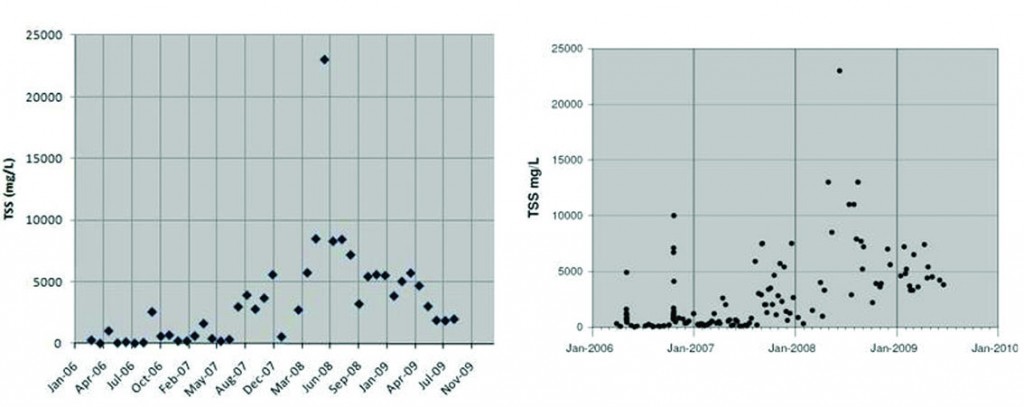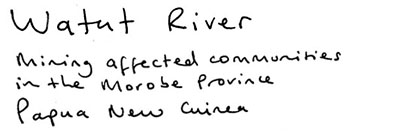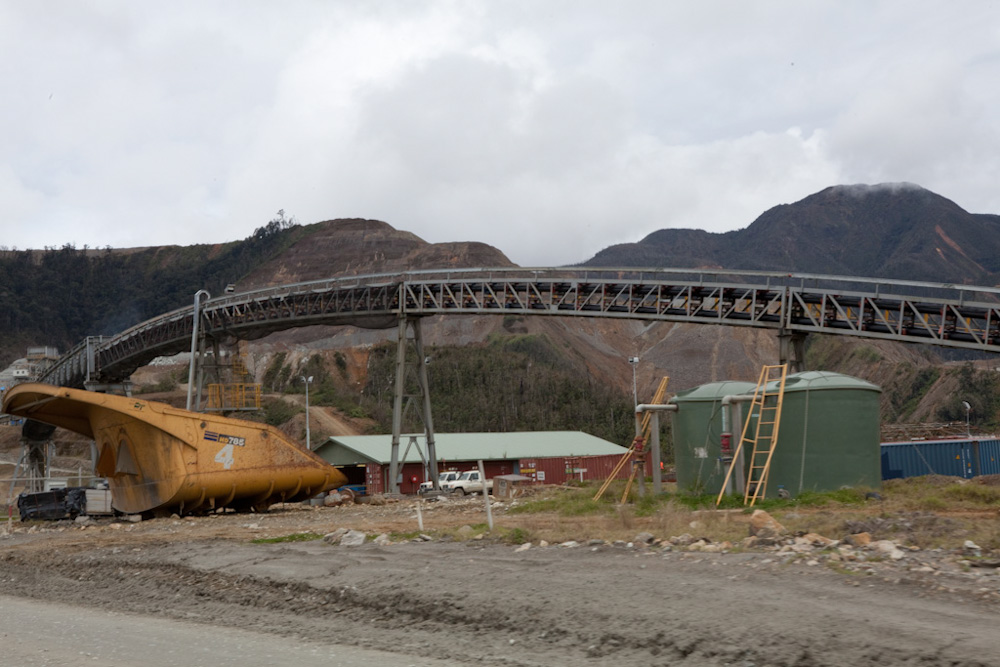THE SMEC REPORTS: PRINCIPAL FINDINGS
The two SMEC reports (SMEC, 2010a,b) systematically examined the environmental management systems that were in place during the construction phase of the Hidden Valley project, as well as those in early 2010 after commissioning had started just before commercial production was declared from October 2010. In concise terms, the SMEC reports found:
- systematic non-compliance with permit and approval conditions, with 10 potential non-compliances and only partial compliance with 30 conditions from a total of 73 conditions, including failure to achieve certification of the environmental management system (based on ISO14001, the relevant international standard);
- a lack of waste rock and erosion controls during construction, including a weakness in the permit conditions which set no limit for suspended sediment in waters draining the site during the construction phase;
- an internal study for the MMJV suggested that some 20 to 30 Mt of waste rock and mine-related sediment had entered the Watut River – or some 5-10 Mt/tear and much higher than the EIS value of 4.7 Mt/year of natural sediment at the Watut-Bulolo confluence;
- of the eroded waste rock, approximately 30% was potentially acid-forming – that is, it contained sulfide minerals which when exposed to the surface environment would chemically react to form sulfuric acid and leach heavy metals and salts from the waste – providing a major environmental hazard to aquatic ecosystems and users of the Upper Watut River;
- the EIS predictions of equal but minor impacts on the Bulolo and Watut Rivers was severely deficient, since the impacts have been about 90% to the Watut River instead and quite significant (especially with respect to erosion of waste rock);
- a failure to operate waste management and landfill practices in accordance with the approved plan;
- the sewage treatment system was overloaded and causing a major risk of pathogen and nutrient contamination to downstream users of the Watut River;
- systematic failure to maintain a thorough environmental monitoring regime for aspects such as ecological, air quality, noise, vibration, hydrometeorology, and water and sediment quality monitoring, including rigorous data management and permit review procedures;
- a single grab sample of water from the Watut River showed slightly elevated concentrations of some heavy metals and cyanide compared to environmental baseline studies, which suggested the need for a more thorough study of possible pollutant sources and pathways.

Figure 10: Total suspended sediment (TSS) at the Nauti compliance point in the Watut River, downstream from Hidden Valley (left – monthly mean values; right – individual data points) (SMEC, 2010a).
As part of the permit and approval conditions for the Hidden Valley mine, a compliance point is located at Nauti downstream in the Upper Watut River – although there is no clear map showing this location in the SMEC reports (it is shown, however, in the two recent Annual Environment Reports). The total suspended sediment (‘TSS’) in water of the Watut River at the Nauti compliance point is shown in Figure 10. The commencement of road construction in mid-2006 is clearly visible as a major though short-lived spike in TSS levels to ~5,000 mg/L, including another short spike in late 2006 to ~10,000 mg/L. As full-scale mine construction began in June 2007, TSS levels gradually rose to a new peak of about 23,000 mg/L in mid-2007, but were declining to around 5,000 mg/L by mid-2009. This period is closely correlated with poor waste rock management practices at the project, which led to excessive erosion into the Watut River. The MMJV did not provide SMEC with any 2010 data to verify if the TSS trend continued to decline.


